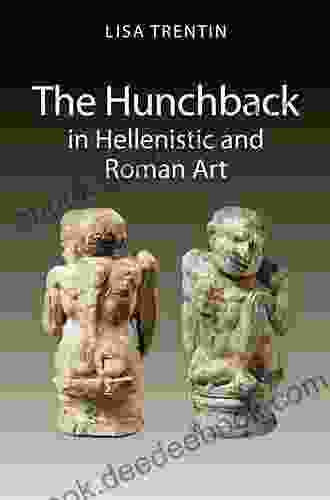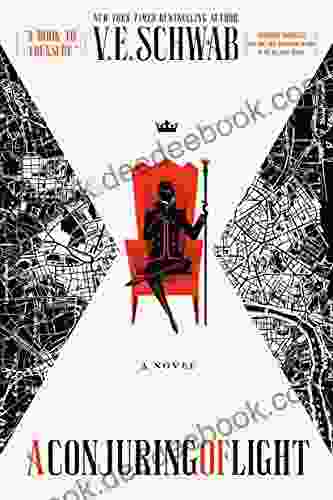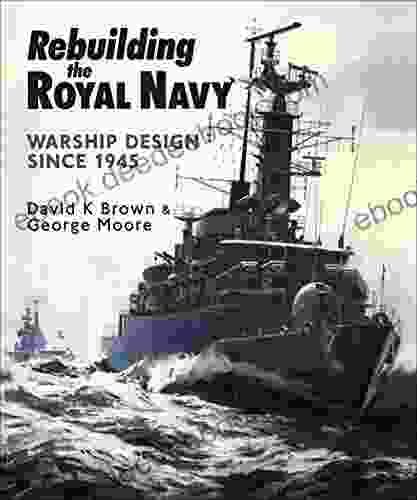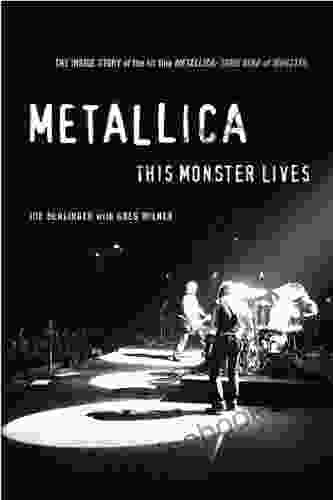Rebuilding the Royal Navy: Warship Design Since 1945

The Royal Navy emerged from the Second World War as the world's pre-eminent naval power. However, its fleet had been heavily depleted during the conflict, and many of its ships were obsolete. The Admiralty faced the challenge of rebuilding the fleet to meet the demands of a new era.
4.5 out of 5
| Language | : | English |
| File size | : | 73308 KB |
| Text-to-Speech | : | Enabled |
| Screen Reader | : | Supported |
| Enhanced typesetting | : | Enabled |
| X-Ray | : | Enabled |
| Word Wise | : | Enabled |
| Print length | : | 535 pages |
| Lending | : | Enabled |
| Paperback | : | 130 pages |
| Item Weight | : | 9 ounces |
| Dimensions | : | 6 x 0.33 x 9 inches |
The Royal Navy's post-war warship design was shaped by a number of factors, including the rise of air power, the development of new technologies, and the changing global strategic landscape. The Admiralty adopted a phased approach to rebuilding the fleet, with the first priority being the construction of new aircraft carriers.
Aircraft Carriers
Aircraft carriers had played a decisive role in the Second World War, and the Royal Navy was determined to maintain its lead in this area. The first post-war aircraft carrier was HMS Ark Royal, which was commissioned in 1950. Ark Royal was a large and powerful ship, with a displacement of over 40,000 tons. It was equipped with a full flight deck and could carry over 100 aircraft.
Ark Royal was followed by a series of other aircraft carriers, including HMS Eagle, HMS Hermes, and HMS Victorious. These ships were smaller than Ark Royal, but they were still capable of carrying a large number of aircraft. The Royal Navy also operated a number of light aircraft carriers, which were used for anti-submarine warfare and other tasks.
Destroyers
Destroyers were another important part of the Royal Navy's post-war fleet. Destroyers were used for a variety of tasks, including anti-aircraft warfare, anti-submarine warfare, and escort duties. The first post-war destroyer was HMS Daring, which was commissioned in 1949. Daring was a large and powerful destroyer, with a displacement of over 3,000 tons. It was armed with a variety of weapons, including guns, torpedoes, and anti-aircraft missiles.
Daring was followed by a series of other destroyers, including HMS Battleaxe, HMS Caprice, and HMS Cavalier. These ships were smaller than Daring, but they were still capable of performing a wide range of tasks. The Royal Navy also operated a number of smaller destroyers, which were used for coastal patrol and other duties.
Frigates
Frigates were the smallest type of warship in the Royal Navy's post-war fleet. Frigates were used for a variety of tasks, including anti-submarine warfare, anti-aircraft warfare, and patrol duties. The first post-war frigate was HMS Blackwood, which was commissioned in 1954. Blackwood was a small and lightly armed frigate, with a displacement of just over 1,000 tons. It was armed with a variety of weapons, including guns, torpedoes, and anti-submarine missiles.
Blackwood was followed by a series of other frigates, including HMS Leander, HMS Salisbury, and HMS Rothesay. These ships were larger and more heavily armed than Blackwood, and they were capable of performing a wider range of tasks. The Royal Navy also operated a number of smaller frigates, which were used for coastal patrol and other duties.
The Royal Navy's post-war warship design was shaped by a number of factors, including the rise of air power, the development of new technologies, and the changing global strategic landscape. The Admiralty adopted a phased approach to rebuilding the fleet, with the first priority being the construction of new aircraft carriers. The Royal Navy also built a number of destroyers and frigates, which were used for a variety of tasks.
The Royal Navy's post-war warship design was successful in meeting the challenges of a new era. The new ships were powerful and versatile, and they helped the Royal Navy to maintain its position as one of the world's leading naval powers.
4.5 out of 5
| Language | : | English |
| File size | : | 73308 KB |
| Text-to-Speech | : | Enabled |
| Screen Reader | : | Supported |
| Enhanced typesetting | : | Enabled |
| X-Ray | : | Enabled |
| Word Wise | : | Enabled |
| Print length | : | 535 pages |
| Lending | : | Enabled |
| Paperback | : | 130 pages |
| Item Weight | : | 9 ounces |
| Dimensions | : | 6 x 0.33 x 9 inches |
Do you want to contribute by writing guest posts on this blog?
Please contact us and send us a resume of previous articles that you have written.
 Page
Page Chapter
Chapter Genre
Genre Library
Library E-book
E-book Paragraph
Paragraph Bookmark
Bookmark Shelf
Shelf Glossary
Glossary Foreword
Foreword Synopsis
Synopsis Manuscript
Manuscript Scroll
Scroll Codex
Codex Tome
Tome Classics
Classics Biography
Biography Autobiography
Autobiography Memoir
Memoir Encyclopedia
Encyclopedia Dictionary
Dictionary Narrator
Narrator Character
Character Librarian
Librarian Catalog
Catalog Borrowing
Borrowing Archives
Archives Periodicals
Periodicals Reserve
Reserve Academic
Academic Journals
Journals Reading Room
Reading Room Rare Books
Rare Books Special Collections
Special Collections Interlibrary
Interlibrary Study Group
Study Group Thesis
Thesis Storytelling
Storytelling Awards
Awards Theory
Theory Baby Professor
Baby Professor Benjamin J Broome
Benjamin J Broome Paul Haston
Paul Haston Jessie Kelley
Jessie Kelley Skip Mort
Skip Mort John C Fortier
John C Fortier John Storm Roberts
John Storm Roberts Don Ness
Don Ness Susan Rose Ackerman
Susan Rose Ackerman Sean Madigan Hoen
Sean Madigan Hoen Saeed Rahman
Saeed Rahman Lisa Helen Gray
Lisa Helen Gray Margaret Levi
Margaret Levi Joshua St Luce
Joshua St Luce W Jeff Bishop
W Jeff Bishop Colleen Kelley
Colleen Kelley James E Doyle
James E Doyle Gay Flashman
Gay Flashman Holly Hook
Holly Hook Scott Cook
Scott Cook
Light bulbAdvertise smarter! Our strategic ad space ensures maximum exposure. Reserve your spot today!
 Melvin BlairFollow ·6.1k
Melvin BlairFollow ·6.1k Dylan HayesFollow ·18k
Dylan HayesFollow ·18k Jerry WardFollow ·18.4k
Jerry WardFollow ·18.4k Desmond FosterFollow ·12.6k
Desmond FosterFollow ·12.6k J.R.R. TolkienFollow ·12.6k
J.R.R. TolkienFollow ·12.6k Charles DickensFollow ·9.3k
Charles DickensFollow ·9.3k Barry BryantFollow ·4.7k
Barry BryantFollow ·4.7k Sam CarterFollow ·10.7k
Sam CarterFollow ·10.7k

 E.E. Cummings
E.E. CummingsThe Routledge International Handbook on Fear of Crime
Fear of crime is a serious problem that can...

 Fletcher Mitchell
Fletcher MitchellThe Hunchback in Hellenistic and Roman Art: A...
The hunchback, or kyphosis, is a physical...

 Victor Turner
Victor TurnerA Comprehensive Guide to Needle Felting for Moms:...
Needle felting, a captivating craft...

 Joseph Foster
Joseph FosterWhere is Scandinavia?
Scandinavia is a region in...

 Leon Foster
Leon FosterNovel Shades of Magic: A Masterpiece of Magical...
An Enthralling...
4.5 out of 5
| Language | : | English |
| File size | : | 73308 KB |
| Text-to-Speech | : | Enabled |
| Screen Reader | : | Supported |
| Enhanced typesetting | : | Enabled |
| X-Ray | : | Enabled |
| Word Wise | : | Enabled |
| Print length | : | 535 pages |
| Lending | : | Enabled |
| Paperback | : | 130 pages |
| Item Weight | : | 9 ounces |
| Dimensions | : | 6 x 0.33 x 9 inches |













